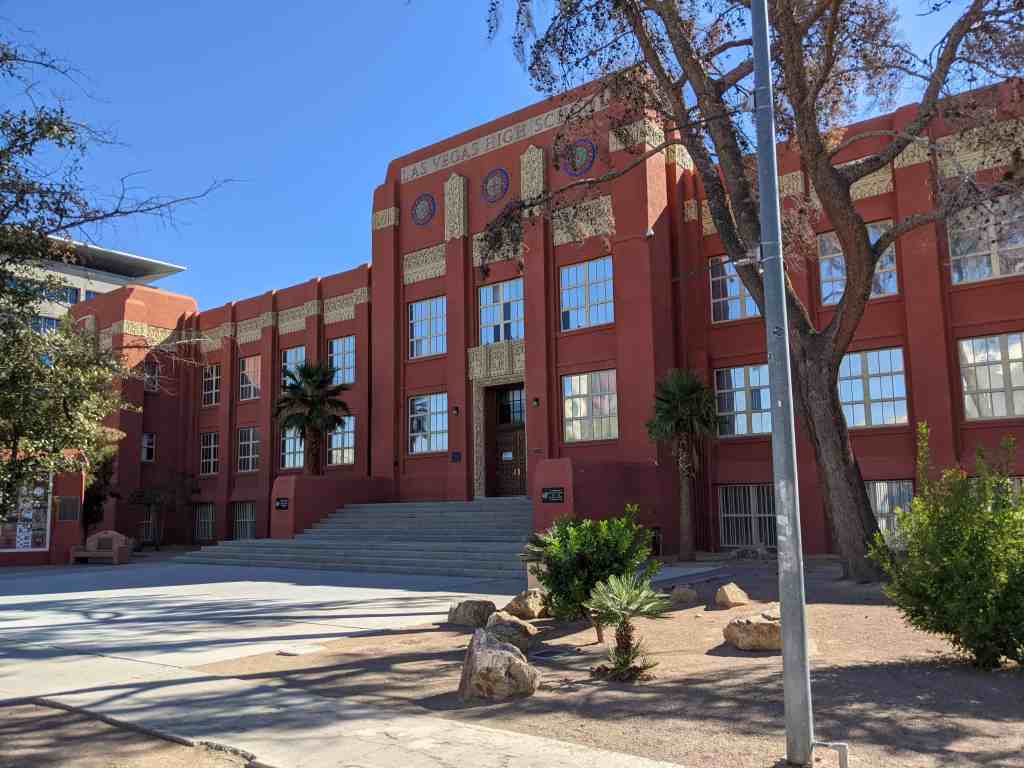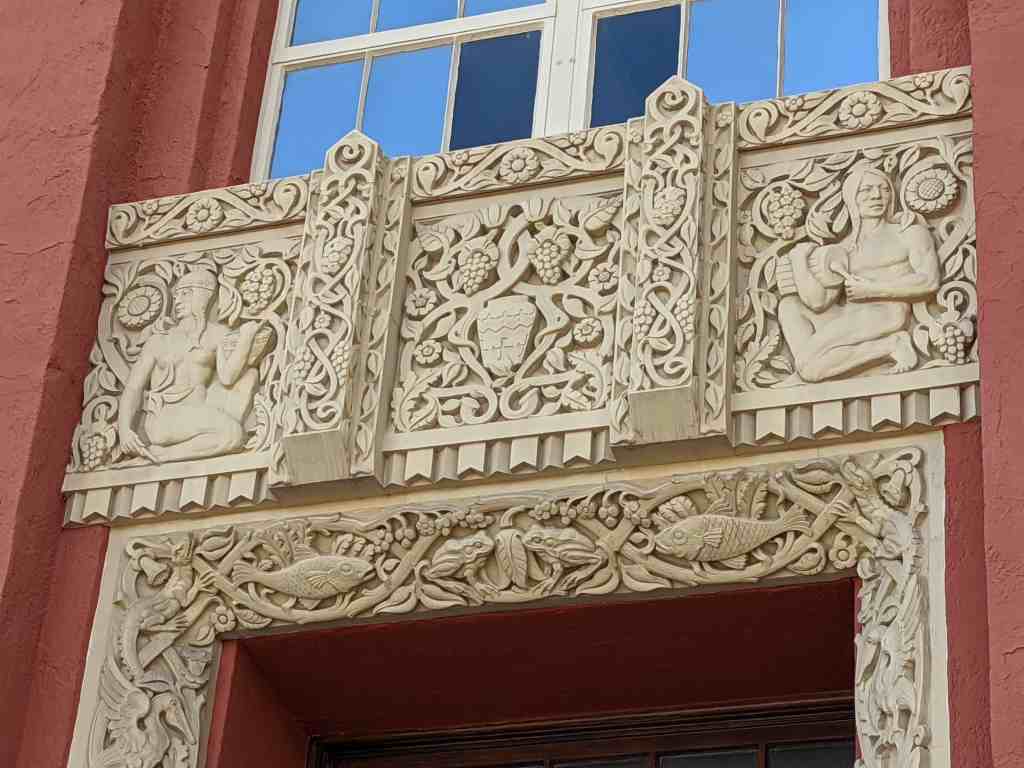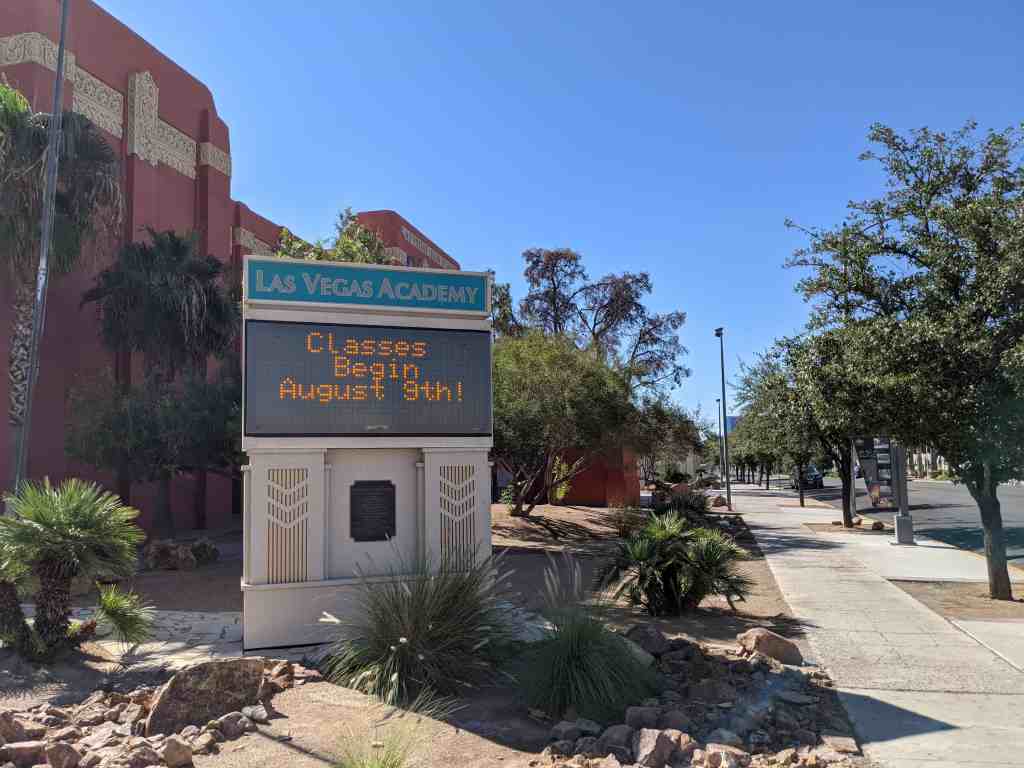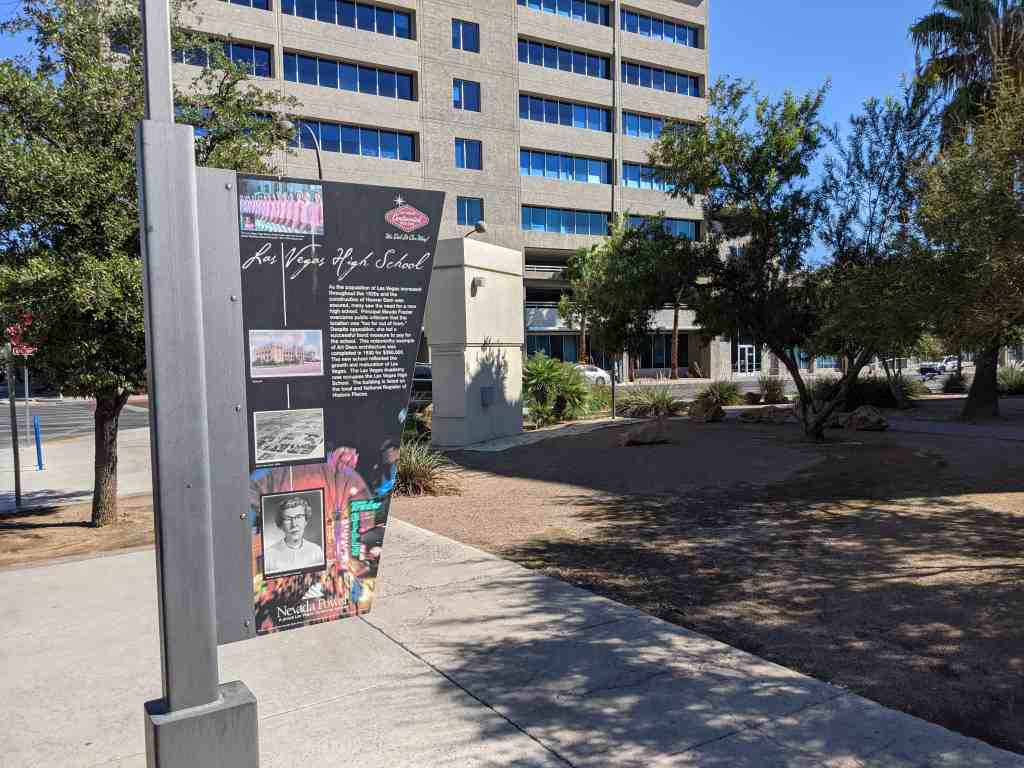Tags

Las Vegas High School
The Las Vegas High School Administration Building and Gymnasium are two, architecturally significant buildings associated with development of public, secondary education in the City of Las Vegas. The buildings are the most sophisticated examples of the Art Deco style in the City and were designed by the Reno architectural firm of George A. Ferris and Son. The Academic and Gymnasium Buildings were erected in 1930-31 as part of a three building educational complex and reflects the growth and development of Las Vegas during the period of the Hoover Dam construction.
Located at 315 South 7th Street in Las Vegas, Nevada. Added to the National Historic Register (#86002293) on September 24, 1986. The text on this page is from the nomination form from when it was added to the register.
Related:



The development of Las Vegas can be traced to the 1905 construction of the San Pedro, Los Angeles and Salt Lake Railroad. By 1911 the SPLA and SL had established a characteristic western railroad town on the site to serve as a division point between Utah and California. Town development was confined to railroad related services until the late 1920 T s. The Congressional approval of the Boulder Canyon Act in 1928 spurred a period of intensive development for the community. This legislation provided funds for preliminary work on a dam for the Colorado River. The project, which resulted in the construction of nearby Hoover Dam, was responsible for a 125% population increase in Las Vegas between 1920 and 1930. From an isolated railroad service center, Las Vegas expanded to a modest city providing services to the dam project as well as the tourists attracted by its construction.
In recognition of Las Vegas’ increased population and the role of education facilities in attracting a stable, permanent population, the local school district lead by superintendent Maude Frazier proposed the construction of a high school complex. The proposed project met with limited community resistance based on project costs, the size of the proposed complex and its site, then two blocks from the center of town.


Despite this opposition, a $350,000 City bond issue was passed in 1930 for the construction of a three building high school complex encompassing a Shop Building (d.c.1950) and the existing Academic and Gymnasium Buildings. The complex was designed by architects George A. Ferris and Son and constructed by the Ryberg and Sorenson Construction Company of Salt Lake City. Work on the high school complex was begun in 1930 and completed by September of the following year.
The high School complex served as the focus for Las Vegas residential development for the next decade.
Since its construction in 1930-31, the high school complex has been expanded to incorporate seven educational buildings, tennis courts, basketball courts, a football stadium and track. The original Academic Building continues to serve as the campus’ primary structure.
The Las Vegas High School Academic Building and Gymnasium are architecturally significant as the only intact examples of monumental Art Deco design in Las Vegas. The structures are two of four major public buildings surviving from the period. The other intact public buildings from the period are the Federal Building/Post Office, a Neoclassical style structure and the Las Vegas Hospital, an adobe, Spanish-Colonial Revival style building.
The complex was designed by architect, George A. Ferris and Son, a prominent Reno architectural firm practicing in Nevada during the first half of the twentieth century. G. A. Ferris is listed in the Reno City Directory for 1912. By 1930-31 Ferris had entered into a partnership with his son, Lehman. The Las Vegas High School complex was a major commission for the Ferris firm whose work focused on commercial buildings in the Reno area. The buildings 1 ornamentation represent a unique integration of Art Deco and southwestern motifs. This integration was categorized as Aztec Moderne by the Las Vegas Evening Review-Journal at the time of the buildings’ construction.
In addition to being stylistically unique for the Las Vegas area, the Academic Building and the Gymnasium were the first monumental, reinforced concrete buildings to be constructed in the community.















Senior Squares






Las Vegas High School Neighborhood




